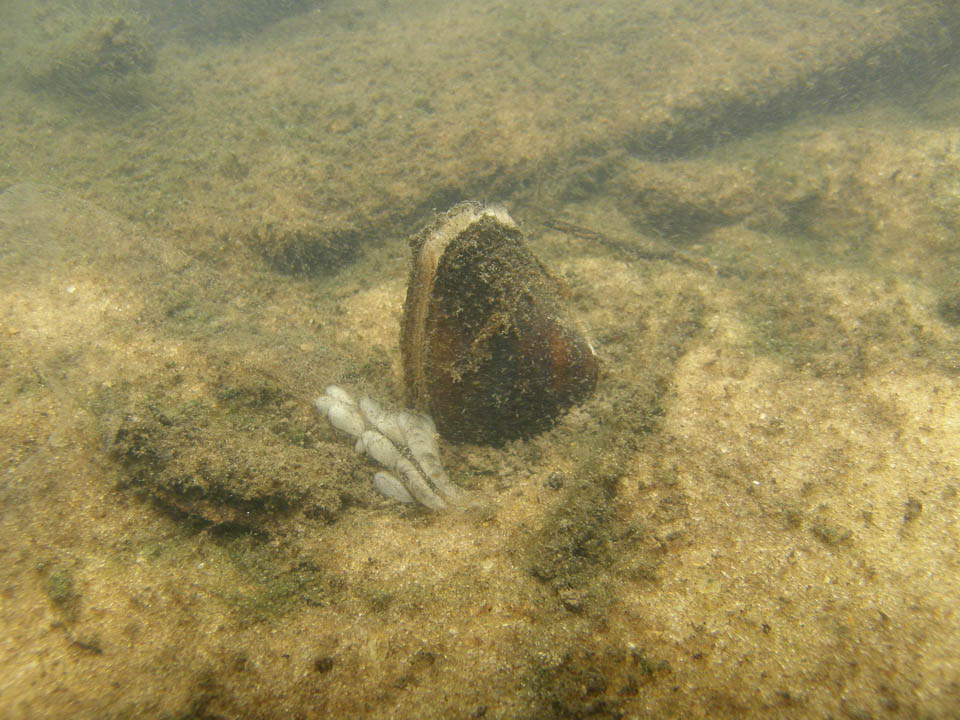
It’s all about the origin; where we come from, who we call kin often plays a significant role in who we become. The same is true for the two reservoirs hosting the 2023 Academy Sports + Outdoors Bassmaster Classic presented by Toyota.
The story starts with a bunch of freshwater mussels populating the Holston and French Broad rivers, the confluence of which form the foundation for one of the nation’s most important waterways — the 652-mile-long Tennessee River.
While Classic boundaries extend to the Interstate 40 bridge on the Holston and the Highway 168 bridge on the French Broad, their mollusk impacts bode well for the primary tournament waters of Fort Loudoun and Tellico lakes. (Fort Loudoun begins the series of nine Tennessee River reservoirs and links to Tellico through a navigable canal.)
According to Jason Wis, Mollusk Conservation Coordinator for the Tennessee Wildlife Resource Agency, the agency has little official data for Loudoun and Tellico’s mussels, but upstream sampling has yielded encouraging findings, upon which a plausible premise stand.
“In the early 2000s, I participated in a sampling in the Holston River, and we’ve found this river to be one of the (region’s) biodiversity hotspots, with up to 75 mussel species occurring at one site,” Wis said. “We were also seeing some promising results on mussel growth and reproduction in the French Broad River.
“All that area is up above (Classic waters), but when you’re dealing with flowing rivers like the Tennessee, what happens upstream affects everything downstream. So that definitely could be helping some of the areas down below Knoxville.”

Flexing their mussels
Although many of the mussels occurring in the Tennessee River are federally listed as endangered species, Wis said this waterway, including its headwaters, boasts an impressive reputation for resilience. Mussels prefer free-flowing water and, while the Tennessee Valley Authority’s system of dams and reservoirs transformed the region by providing power and flood control, the habitat alteration doomed several species.
“At one time the Tennessee River was the most biologically diverse river in North America for freshwater mussels,” he said. “Historically, Tennessee had about 141 species of mussels. About 40 to 50 or them are extinct or at risk of extinction.
“The reservoirs were the major factor that wiped out most of (the now-extinct species). Since then, I think the ones that could survive in the standing water habitat are holding steady.”
Based on historical data, Wis said Loudoun and Tellico’s likely mussel residents include pocket book, black sand shell, white heel splitters, paper pond shells, giant floaters and pig toes. Specific habitat preferences vary, but all freshwater mussels play a critical environmental roll.
“Freshwater mussels are great filter feeders,” Wis said. “One of the terms that’s often used is ‘the livers of the rivers,’ so they do all the filtration of nutrients and sediment. They can filter incredible amounts of water, so they definitely help out with the turbidity in these rivers.”
With the Classic hosted by Tennessee’s third-largest city, Knoxville, the impact of healthy mussel populations in the Holston and French Broad will be immediate.
“The headwaters are like our arteries and veins,” Wis said. “If you have two good ones coming in it’s going to (benefit everything below), especially with a major city right there just downstream of that confluence.
“If you have bad stuff coming into the river and then there’s more discharge coming in from waste water, that magnifies the concern. If the good stuff is coming out of the ones upstream, any of the wastewater and general runoff from an urban area will be less of a negative impact.
Angling appeal
Wis also notes that his previous work in Georgia rivers found that mussel beds can provide spawning habitat for shad. It seems reasonable to extend this obvious bass appeal to anywhere mussels occur.
“Talking to anglers, they say wherever they find the mussel beds is usually where they find the good bass fishing,” Wis said.
Bassmaster Elite and Classic qualifier Brandon Lester agrees: “Anytime you’re on the Tennessee River, it’s always a positive. The biggest key factor is location; from what I’ve seen, mussels set up on a good, clean, hard-bottom area. Most of time, it’s small gravel, and that’s where the bass like to spend most of their time.
“Very rarely do you see a (Tennessee River) bass sitting on areas where the bottom is just mucky. Most of the time, a bass lives his life on clean, hard-bottom areas, so I think all of that goes hand in hand.”
In addition to the potential spawning habitat Wis noted, Lester said his observations have led him to believe bait schools also could be attracted to shell bars for feeding opportunities — algae and other micro meals they favor. Beyond that, he sees shell bar location as a foundational bass attractor. “Usually, mussels are going to be clustered in certain areas,” Lester said. “In order to get those clean bottom places, current is what causes those; years and years of current hitting the tip of the point or the tip of a bar. A lot of times, that’s where those mussels will set up.”

Hitchhikers
One of the most interesting points about freshwater mussels — their unique reproductive strategy, which requires a host fish to carry their larvae to new areas for colonization — will, in some cases, directly link them to black bass.
Unlike the nest fertilization process of black bass, male mussels release sperm and females bring it into their shells where eggs are internally fertilized and held in the females’ gills. Once the eggs develop, the glochidia (larvae) are ready to hitch a ride upstream.
Mother mussel arranges this transportation with her own fishing skills. Wrapping the glochidia in a thin-walled extension of her mantle, she waves the larvae-filled lure over her head.
When a host fish bites what it mistakes for forage, the extension breaks and releases the glochidia, which latch on to the host fish’s gills and ride upstream for the fish’s seasonal migration.
Different mussels prefer different host species and those mantle extensions can be amazingly creative — often mimicking their host species’s preferred forage. Hitchhiking glochidia do not harm their hosts and after a few weeks, they simply detach at the appropriate site.
“Generally, where those mussel beds are means the fish must spend a lot of time there, as well, because they’re repeatedly dropping off those (juvenile) mussels to those spots over time and allowing those beds to build up,” Wis said. “Several of our federally listed species, such as the pink mucket, use black bass as its primary host, so where you find those mussels, there’s probably a pretty a good black bass population in that area.
“It’s kind of a scenario of which came first, the chicken or the egg? Are the fish there because of the mussels or are the mussels there because of the fish? Or, are they both there because of some unique habitat feature that they both really like? My money would probably be banking on that habitat factor that’s driving both of them.”
Whether or not mussel bar patterns play a decisive role in the Classic’s unfolding, their presence and the important job they perform unquestionably benefits the Tennessee River — starting with its headwaters.





